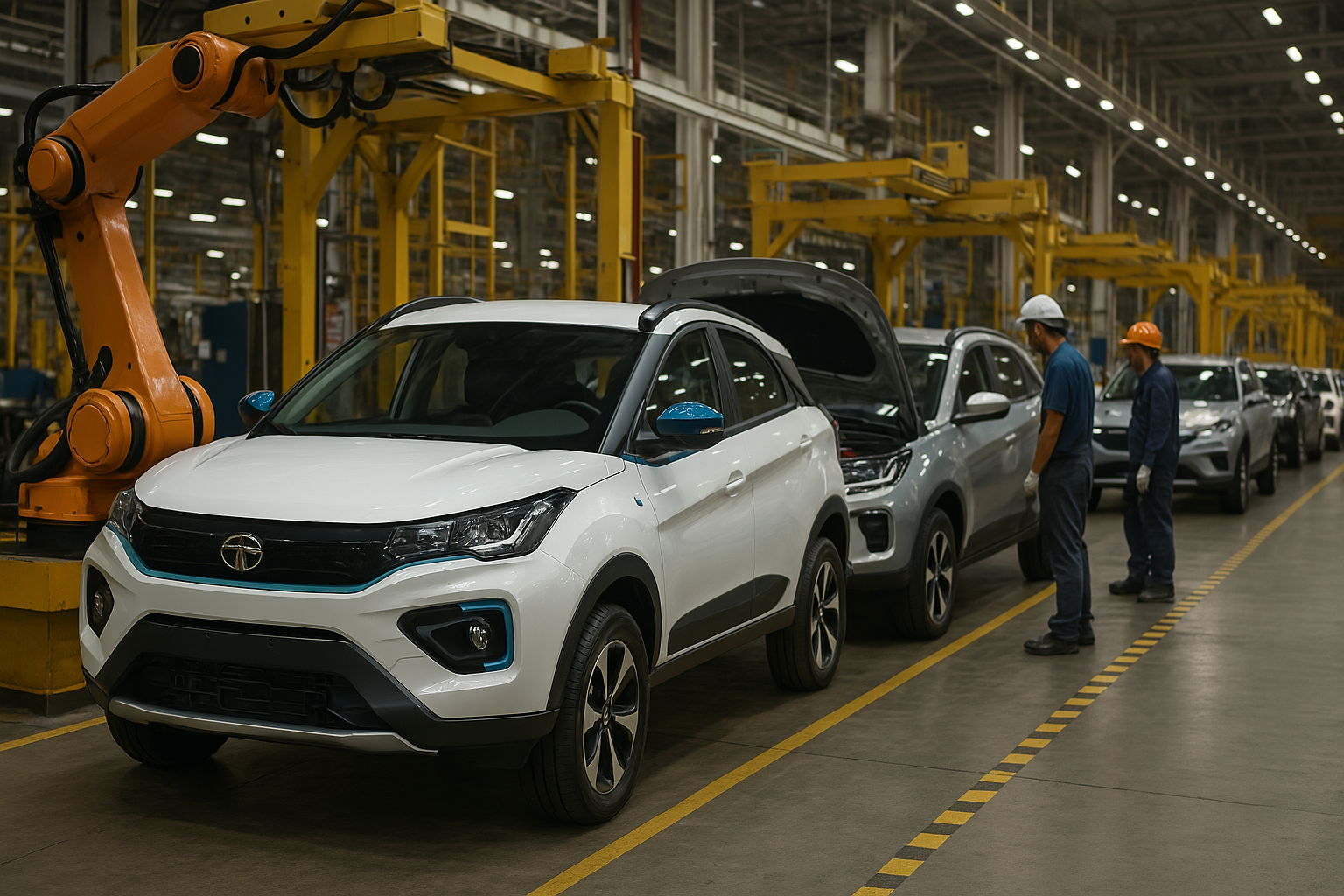India’s PLI Scheme for Auto Sector Boosts EV Growth, Jobs, and Local Manufacturing
The PLI-Auto Scheme is crafted to make India a hub for cutting-edge automotive technologies, particularly in electric mobility and advanced components.

- Country:
- India
The Government of India’s Production Linked Incentive (PLI) Scheme for Automobile and Auto Components, approved by the Union Cabinet on 15th September 2021, is emerging as a cornerstone policy for strengthening India’s position in the global automotive landscape. With a budgetary outlay of ₹25,938 crore, this scheme is specifically targeted at encouraging domestic manufacturing of Advanced Automotive Technology (AAT) products and addressing cost disadvantages faced by the industry.
Strategic Objective: Strengthening India's Auto Sector Competitiveness
The PLI-Auto Scheme is crafted to make India a hub for cutting-edge automotive technologies, particularly in electric mobility and advanced components. It aims to foster fresh investments, build domestic capabilities, create jobs, and reduce import dependency, while also aligning with national campaigns like ‘Make in India’ and ‘Atmanirbhar Bharat’.
This incentive-based structure supports Original Equipment Manufacturers (OEMs) and Component Manufacturers, rewarding companies based on their incremental sales of AAT products manufactured within India.
AAT Categories: Widening the Scope of Innovation
To cater to the industry's evolving needs, the Ministry of Heavy Industries (MHI) notified, on 9th November 2021, the inclusion of 19 categories of Advanced Automotive Technology (AAT) vehicles and 103 AAT components under the scheme. These categories were finalized after comprehensive consultations with stakeholders across the automotive value chain, including OEMs, suppliers, and industry bodies.
The scheme dynamically adjusts to changes in technology and market demand, enabling a flexible policy framework.
Focus on Domestic Value Addition (DVA)
A key eligibility requirement under the PLI-Auto Scheme is achieving a Domestic Value Addition (DVA) of at least 50%, to ensure true indigenous manufacturing. This criterion supports the twin goals of cutting down imports and developing a robust domestic supply chain for critical automotive technologies.
To standardize and monitor DVA calculations, a detailed Standard Operating Procedure (SOP) was created in consultation with designated testing agencies. This provides clear guidelines for applicants and increases transparency and confidence in the scheme’s implementation.
As of now:
-
6 OEMs have received DVA certification for 66 approved vehicle variants.
-
7 component manufacturers under the Component Champion category have received DVA certification for 22 approved component variants.
Measurable Impact: Investments, Jobs, Sales, and Disbursements
The PLI scheme has already started delivering tangible results across multiple fronts:
1. Capital Investments
By December 2024, companies under the scheme have committed over ₹25,000 crore in capital expenditure. Major players like Tata Motors, Mahindra & Mahindra, and other leading OEMs have announced large-scale investments to expand Electric Vehicle (EV) production capacities, establish R&D centers, and upgrade existing manufacturing lines.
2. Employment Generation
The scheme has been instrumental in creating thousands of direct and indirect jobs, especially in areas like:
-
Manufacturing operations
-
EV assembly lines
-
R&D and testing facilities
-
Logistics and supply chain management
New EV production plants, especially in states like Maharashtra, Tamil Nadu, and Gujarat, have become employment hubs, uplifting local economies and generating opportunities for skilled and semi-skilled workers.
3. Sales Growth
The PLI scheme has coincided with a significant surge in the sales of EVs and advanced automotive components. The launch of new EV models by various OEMs, incentivized under the scheme, has led to an increase in domestic adoption, boosting overall market growth in the sustainable mobility segment.
4. Incentive Disbursement
The financial year 2023-24 was the first year of performance evaluation under the scheme, with ₹322 crore disbursed as incentives in FY 2024-25. This payout marks the beginning of a larger trend, with disbursements expected to grow substantially as more companies meet eligibility criteria.
Building a Globally Competitive Automotive Ecosystem
The PLI-Auto Scheme is transforming India into a global hub for automotive innovation and manufacturing. The focus on Advanced Automotive Technologies—particularly in electric mobility, hydrogen-powered vehicles, safety systems, and smart electronics—ensures that India not only meets its domestic needs but also becomes a key player in international supply chains.
The scheme’s alignment with global sustainability goals, promotion of clean mobility, and push for indigenous innovation also support India's climate commitments under COP21 and its roadmap for net-zero emissions.
What Lies Ahead
With a strong policy framework, growing industry interest, and a commitment to clean and advanced technologies, the PLI-Auto Scheme is expected to:
-
Attract greater FDI in the auto sector
-
Accelerate the shift to zero-emission vehicles
-
Enable tech transfer and R&D collaborations
-
Strengthen India’s export capabilities for auto components and EVs
The scheme continues to be refined in collaboration with stakeholders to ensure it remains responsive to industry needs and global trends.
Conclusion
The PLI Scheme for Automobile and Auto Components is not just a policy—it is a strategic catalyst for transformation. It’s reshaping India’s automotive industry by fostering innovation, reducing import reliance, promoting local manufacturing, and integrating Indian players into global value chains.
With its robust foundation, stakeholder-driven design, and performance-based incentives, the scheme is powering India’s transition into a future-ready automotive manufacturing powerhouse.
- READ MORE ON:
- Advanced Automotive Technology
- Production Linked Incentive










